The immersive documentary is in essence dedicated to questioning its audience about the world of yesterday and today. After HOME AFTER WAR, which plunged us into the heart of war-torn Iraq, the filmmaking duo Gayatri Parameswaran and Felix Gaedtke return in 2021 with their awaited project KUSUNDA, in search of lost languages alongside a community in the Nepalese mountains. World premiere at Tribeca Immersive 2021.
From somewhere to Nowhere (Media)
Felix Gaedtke – We both have a background in journalism and traditional “flat” documentaries. How we got into immersive was more or less a coincidence. None of us had a gaming or interactive background, and we never tried VR before. We were working on a project in a creative lab where a mentor talked about 360 video. We were immediately intrigued because one of the aims and all of the storytelling – even before – was to have an exchange of perspectives. VR seemed perfect for this! That’s something that we were fundamentally interested in, even on television or multimedia documentaries. It also seemed to be a new creative world where no rules existed before. Everything had to be explored – you had to make all the mistakes possible and sometimes fall on your nose before you get everything right.

Gayatri Parameswaran – Our traditional (professional) background influences a lot of our practice and the kind of project we do. Nearly all of our projects seek to achieve some kind of impact in the real world – whether we work on themes that are connected to the environment, to social justice, to human rights. Those are our core themes, our core issues that we engage with. And obviously, we also work with a lot of partners. For each project we map out who is the best person to collaborate with and partnered with, as well as for achieving the most impact. Collaboration is a very important backbone of what we do. It’s about building something up and getting people together to work closely, and that is very rewarding. We have a very open and collaborative spirit, we try to get everyone on every part of the process. Interdisciplinary is a keyword.
F. G. – Today we do almost exclusively immersive productions with our own studio in Germany, NowHere Media. We have one of the lucky countries where there is some funding for VR. It allows our small ecosystem to thrive and develop new stuff. In fact Gayatri and I founded the company before we were involved in the immersive world, with the idea to build a framework of people and talents. It gives you a lot of freedom, but also a legitimacy when you start a new project. This is us, our friends and we do cool things!

G. P. – I believe we are also lucky to be in a country with exhibition spaces, museums which allow us to present projects with the public – as well as festivals, art spaces and galleries. It’s a pipeline from start to end – creating a financing space that allows artists and creators to work, then to showcase them.
A new immersive era for the documentary art
G. P. – One of the first things that blew our minds away with virtual reality is the sense of presence that you can give your audiences. Which is not possible in any other medium. 10 years ago we were focusing on war and conflict reporting as journalists. It always gave us a shock when we came back and translated our material into reports, flat documentaries, audiovisual material. Because it was really hard to translate the sense that we had when we were there to give our audiences the same kind of feeling. And we realized this with virtual reality. It’s like pushing a button and that person feels like they are in that same space. That’s why for us taking a realistic point of view is a very big plus when it comes to virtual reality. That’s why we work with techniques like photogrammetry or live action, capturing volumetric video, because it’s like you’re in it. It’s like you’re in the movie and you’re part of the movie. That’s something that kind of pushes the boundaries of storytelling and experiencing stories as well as an audience member.
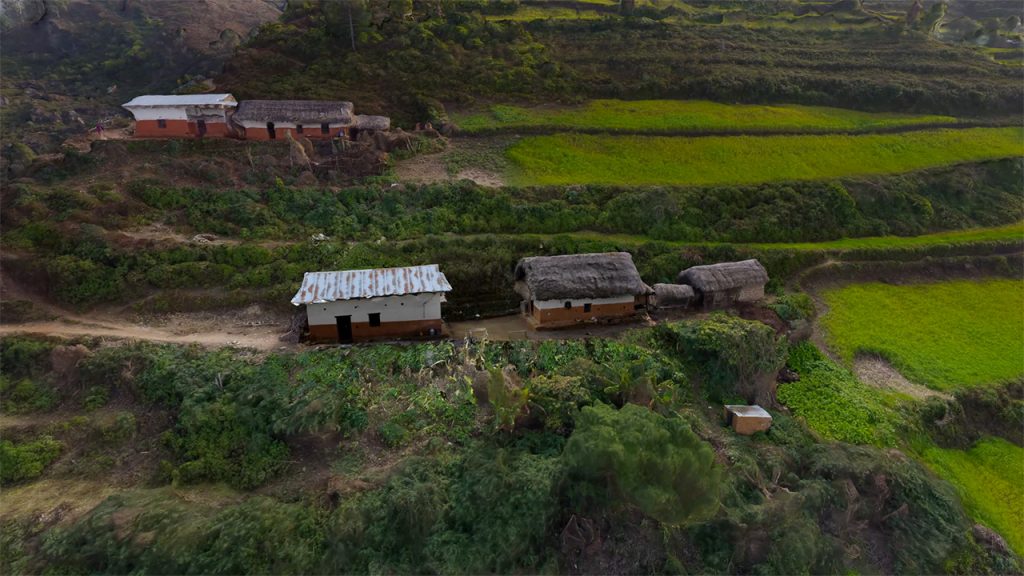
F. G. – It’s also creating your own story within an experience that you can’t even plan beforehand. People would come out of the headset and will have the feeling to remember things from their real life – sometimes it’s like a random connection from their past, or memories. That happened a lot with HOME AFTER WAR. What I mean is people create their own narrative and that makes a place much more relatable for them. That’s something unique by allowing the audience to see things for themselves and roam around by themselves.
F. G. – 360 video is still relevant, and it’s nonsense to say otherwise. Thinking of the recent production, like TRAVELING WHILE BLACK, it shows that you can do beautiful things in a 360 video that don’t need to be necessarily interactive or even volumetric. And 360 video can be added to a more complex story.

Looking for the lost language in KUSUNDA (on Covid schedule)
F. G. – KUSUNDA started in 2012 as we were working on a video (link) about endangered languages in Nepal – we came across Gyani Maiya Kusunda, who was our initial protagonist. We kept in touch as we were very much amazed by her, and the idea grew that we wanted to do something bigger with the subject. For many reasons a documentary film didn’t work out, and VR seemed obvious to continue. Sadly she passed away days before we went into production. That was a big blow and we weren’t really sure what to do. But her family pushed us to go on and we’re very happy that we did.
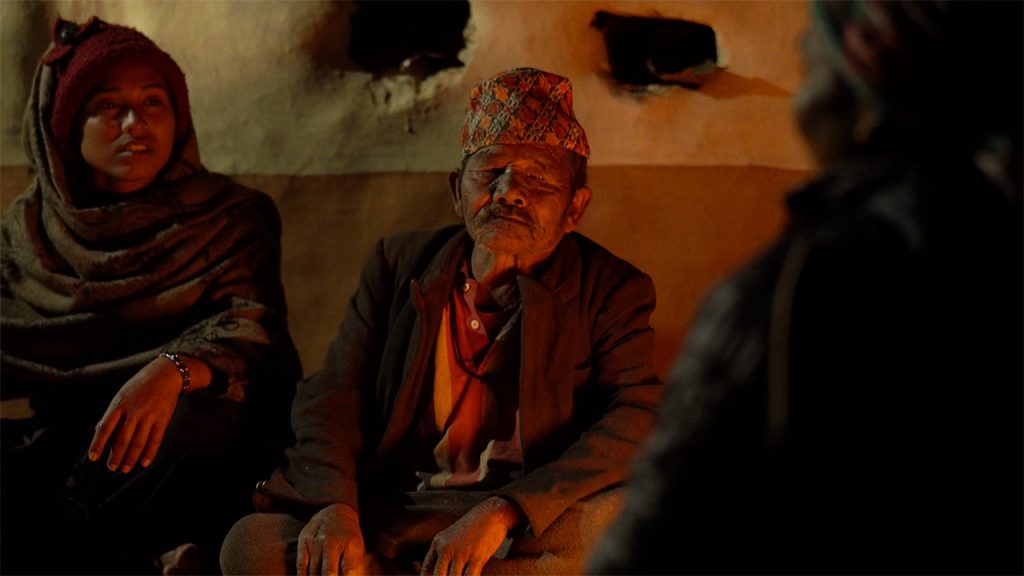
G. P. – This project happened quite organically, actually. At first we had a whole script, when we were working with Gyani on which part of her life should be filmed, how should that work, so on and so forth. We had fundamentally sort of an agreement with her on how the piece will look and should work. All the interactions came through that process. She was a teacher of the Kusunda language and it made a lot of sense that she would say certain words and you would repeat them. It becomes like a language class of some sort. When she passed away, everything stopped.
G. P. – Then we went back to Nepal to meet with her family, and they pushed us to go on. It was a completely new starting point! We met with other members of the community, and we found Hema, a 15-year old teenager – who was learning the language – and her grandfather, Kusunda shaman Lil Bahadur, who used to speak fluently 40 years ago but has forgotten the language for many reasons; to avoid discrimination or try to blend into the town…Now we are ending up in an intergenerational, powerful and very complex story that actually is what happen for every language falling silent or going to sleep due to the migration of the people.
G. P. – When we decided to shoot the film, it was already February 2020! We took one of the last flights out of Nepal in fact, to come back to Germany and start post-production when everything closed. We were very, very lucky that we had this precious moment – and we had worked with them on developing this together so we could work on the post-processing of the piece. During this time it was really hard to stay in contact with them and to continuously go back and forth on the editing because there’s no normal Internet connectivity in the village. But every little piece just fell into place, which seems really great now that it’s worked out in some ways.
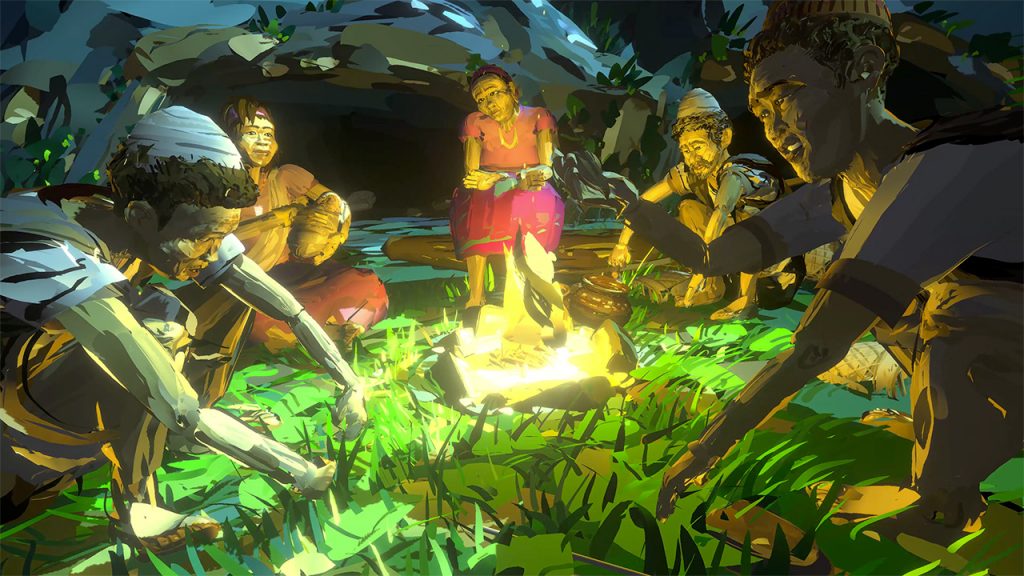
Building KUSUNDA – From photo to audio
G. P. – What we used today is a combination of photogrammetry and other techniques. But in KUSUNDA we’re mixing so many different techniques! Photogrammetry is the basis of our environment and the place where the story evolves. Then we have a volumetric video where we used Dephkit and Kinect to capture our collaborators volumetrically. And there’s also animations, based on motion capture! We are working with a collaboration and co-production with Zurich University of the Arts, providing us with an amazing motion capture studio – which we would never be able to afford, especially for documentary production! They allowed us to work very freely.
G. P. – Part of the story in KUSUNDA takes place in the past. We are animating those parts with actors in mocap – I was one of the actors as well – reenacting the scenes from 50 years ago. We used Tiltbrush to create a very organic aesthetic of these memories. Tying it all together we have voice based interactions that take the whole story forward. Speech recognition becomes part of the technology we use as well. Participants have to speak certain words, they get to learn these words to move forward in the story. And it’s also a branched narrative experience! It’s a lot of different things coming together – and a lot of different departments working together, including music because one of the co-creators was a musician as well. From the creative point of view, working on several techniques, KUSUNDA is a huge evolution from HOME AFTER WAR.
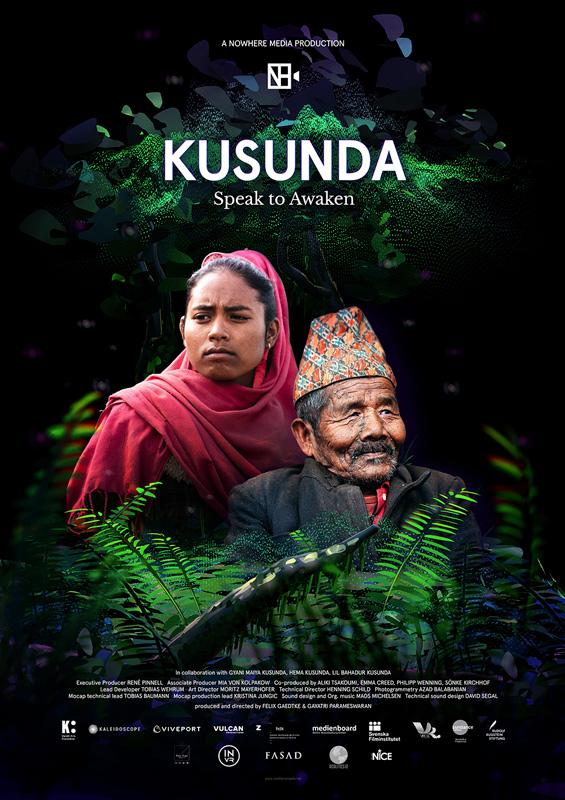
World premiere at Tribeca Immersive 2021
G. P. – We are planning an installation for our world premiere as part of the Storyscapes selection at Tribeca. We are developing an immersive forest – something very important in their Kusunda tradition. The audience will have a chance to socially engage with each other, speak to each other and understand what language means. Hopefully it all works out as planned!
G. P. – It has been like a real pleasure to work with the community in Nepal. I was able to visit them last month (March (2021) and show them the piece. We just hope that the piece can inspire others. It is a tribute to their efforts and what they are doing to revive their language. And maybe it can inspire action in many different parts of the world, because in some ways, linguistic rights are human rights. So that’s something we want to underline with this.
F. G. – Obviously we would like to continue working on the subject with other productions that are tackling the issue of lost language. We have a series called SPEAK TO AWAKEN (link) where we want to showcase more of these communities and languages. And it’s open for co-production with other companies if possible! It would be nice to show how global this phenomenon is and involve more places.

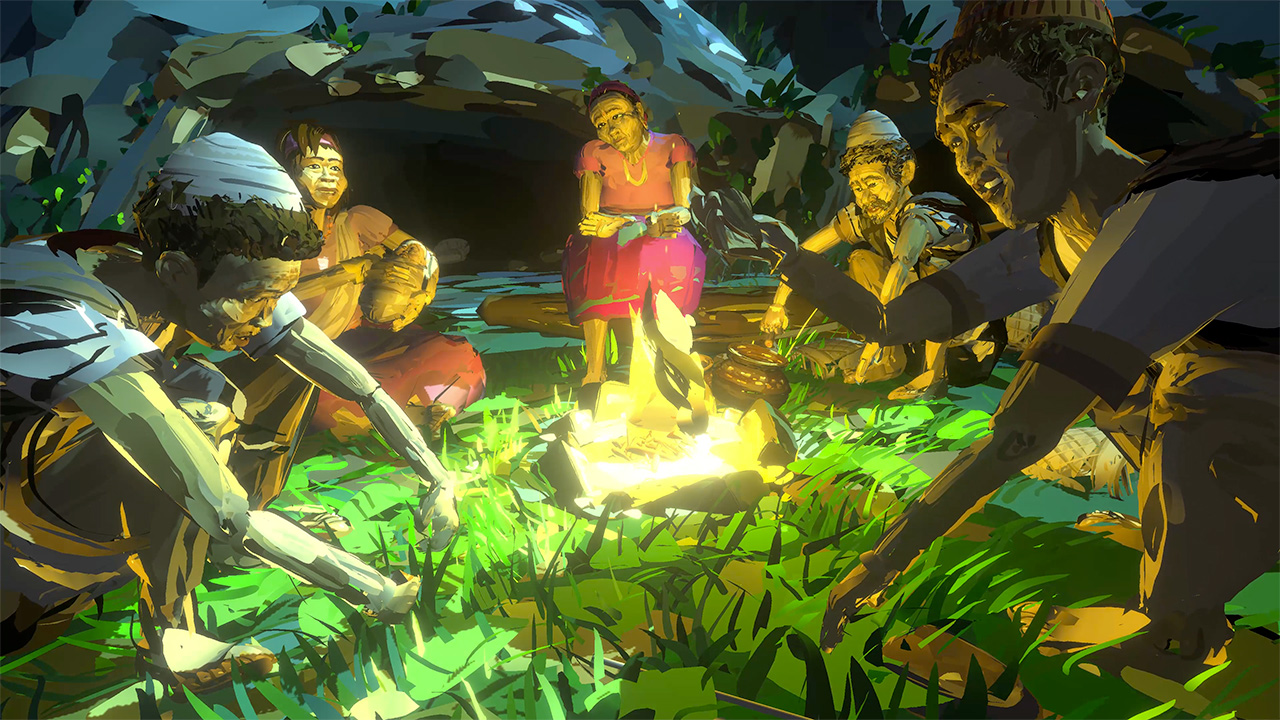

Leave a Reply
You must be logged in to post a comment.